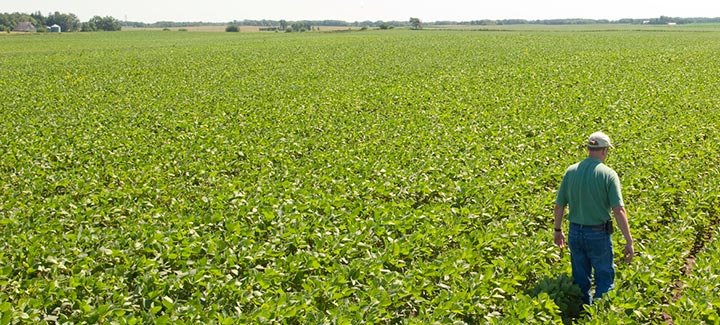
Corn and soybean fields across the Corn Belt are in and starting to emerge. While some growers were able to get their crops in the ground right on schedule, others played the waiting game, delaying planting until temperatures increased and fields had time to dry. Growers in Region 1’s northern areas experienced just that and many had to wait until the middle of May to start planting because of the cold temperatures and wet soil. Some even had to deal with frost, resulting in a slower-than-normal start for many crops in the region and potentially increasing the risk of planting issues.
The key to identifying early season issues is to scout fields following emergence. Take the time to walk the fields to see where seedlings may not have emerged and where seed rot may be an issue, and don’t forget to check for pests. Following these early season scouting steps may make or break your yield potential:
- Check the history: Knowing the history of the acres you plant is a must. Prior seedling diseases and past herbicide resistance issues can help you develop a plan for managing your field after emergence. Before you walk the fields, bring your notes from last year so you can scout areas that may have been an issue last growing season and that may require a seed treatment this year.
- Walk the fields — each one of them: This may seem like a tedious task, especially when you have a lot of acres to cover, but think of it this way: your field may look fine on the outside, but inside is where the problem might lie. You may run into an area where damping off is an issue or where planting populations are concerning. Look for areas where frost or hail damage may have occurred, or for signs of plant damage caused by pests.
- Take notes. Not only will taking notes on a field help you this season, they may also assist you in determining the best modes of action to take on your fields next year. Take note of the problem areas you run across so that you remember the exact issue and location that you need to address, and file those notes as a reminder for years to come.
- When in doubt, grab a sample. If you see an area where seedlings are struggling, take a leaf sample from one of the plants. Environmental experts have the capability to look at the sample to determine if the plant is receiving proper nutrients or if it’s suffering from a disease.
- Know your pests. Corn rootworm, soybean aphids, bean leaf beetles and many more creepy crawlers can thrive in cold, wet conditions. If you’re already familiar with the various signs of pest damage, great, but don’t forget to bring along a pocket field guide just in case.
- Evaluate growth stage. Knowing the crop growth stage in each field is vital to establishing your plan for nutrient applications, insecticide applications and when to begin your weed control strategy.
With sunlight and warmer temperatures over the past few days, we’re hopeful things may start to bounce back in Region 1, but it’s always important to remember that your fields are your profit. Watch over them, and take the time to scout them not only during early season, but also throughout the rest of the growing season to stop problem areas from becoming a hole in your pocket. Talk to your regional sales agronomist for any questions you might have about your findings.
Related Articles
-

Stine® to offer Syngenta’s Victrato® soybean seed treatment in 2026
December 2025 in Agronomy
-

Use Stine’s XP® seed treatments to prevent early injury to your crops
December 2025 in Agronomy
-

Understanding Stine’s enhanced oil profile soybeans
December 2025 in Agronomy
-

Soil sampling sets the stage for spring
November 2025 in Agronomy



